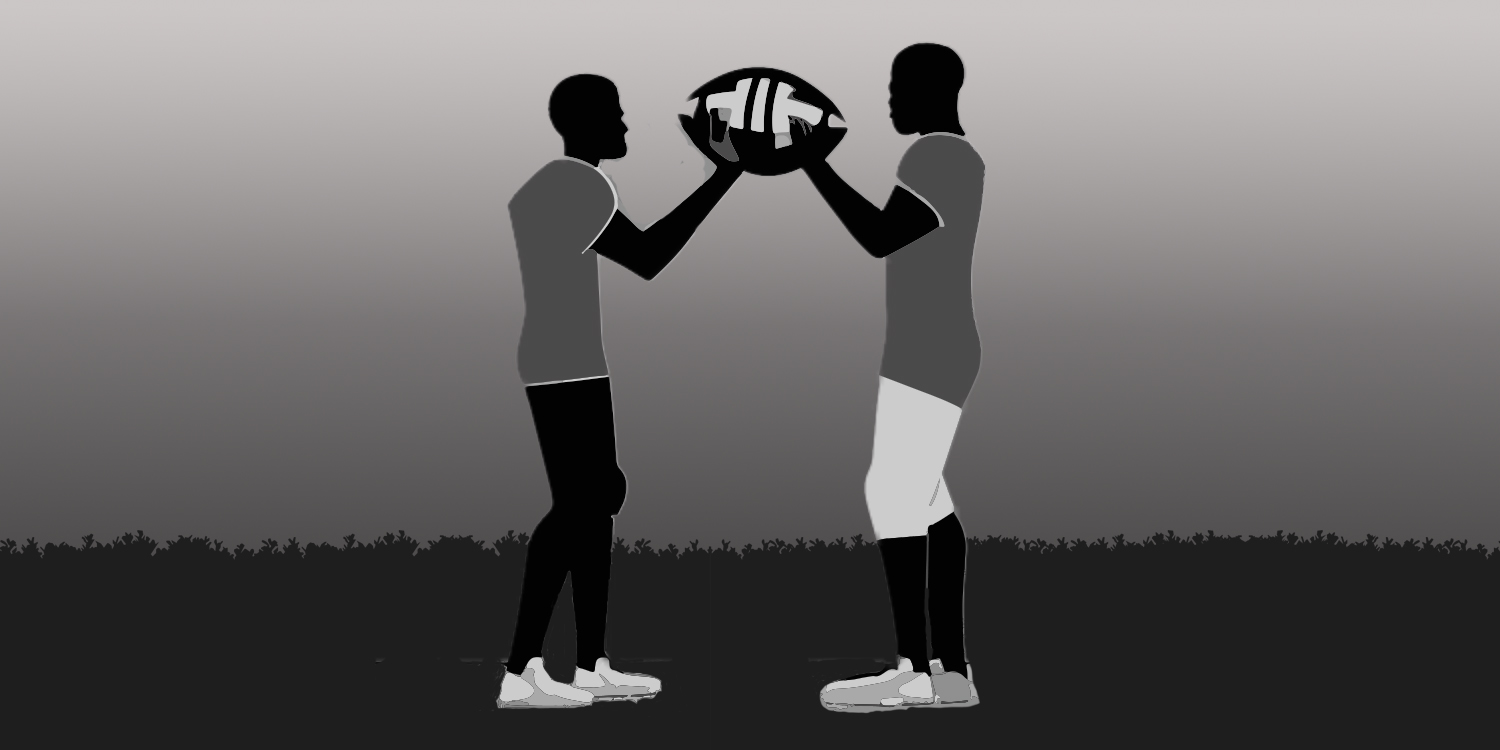Caring Masculinities and Football Brotherhood
Tracie Canada
9 October 2023In her forthcoming book, Tracie Canada describes the various relationships Black college football players cultivate during and beyond their years in college. This is done as a response to the exploitative, violent, and anti-Black structures they tackle, especially the college football system. In the chapter on which this post is based, Canada addresses Black players as brothers to one another, as they express a form of care that values the person over the player, reflects shared practices, and attends to the importance of racialized experiences

During a rivalry game early in the 2023 college football season, University of Colorado and Colorado State University met on the field. There had been a lot of media attention surrounding this match up, given Colorado’s new head coach was a celebrity hire with an extravagant personality. Former professional football and baseball player Deion Sanders lead the team and Colorado came away with a win after a tense game that lasted until 2:30am on the east coast. Not without issue, though.
With only a few minutes remaining in the first quarter, Colorado’s star quarterback (and Coach Sanders’ son) Shedeur Sanders launched the ball to cornerback and wide receiver Travis Hunter. The pass was incomplete. Then, after not catching the ball, Hunter was unexpectedly tackled. After this brutal affront, known as a late hit, Hunter immediately removed his helmet, remained on the ground, and was surrounded by medical staff. He was unable to return to the game and we’d later learn he suffered a lacerated liver.
The hit, itself, points to the inherent violence that has come to define American football. I’ve argued elsewhere that this violence is ordinary, now an almost expected component of play. But what happened only a few seconds after the late hit is also of note.
“Shedeur Sanders,” the game commentator says, “coming to the aid of his number one target.” He narrates this after the quarterback traveled about 40 yards down the field to confront the defender who hit Hunter. Despite all the media cameras and national attention attuned to this particular playing field, a superstar quarterback and rumored Heisman Trophy finalist ran to defend his teammate.
In his rush to respond to the late hit, Shedeur Sanders embodies the football brotherhood and caring masculinity I write about that develops amongst Black college football players.
In my forthcoming book, tentatively entitled Tackling the Everyday: Race, Family, and Nation in Big-Time College Football, I complicate the trope of the team for Black college football players. In American football, the team is the most recognized notion of community and family. This ready-made, built-in, assumed kinship relation is encouraged by football administrators and coaches to flatten differences and invoke the tonality of care, trust, and solidarity within the group. However, popularized narratives about teams and teammates often promote a post-racial narrative, effectively glossing over the importance of the racialized positionalities of the players themselves.
Instead, I consider the football brotherhood that Black college players create and maintain themselves. This brotherhood is a form of relatedness that’s established originally through participation in football, but it eventually transcends the sporting activity itself. Then, like brothers do, they develop a care for and trust amongst each other. Black players are participating in what sociologist Valerie Francisco-Menchavez would define as a “community of care,” in which Black football players navigate multiple anti-Black social worlds and creatively create a social kin relationship that horizontally enacts care.
For almost a decade, with a sustained year of ethnographic fieldwork during the 2017-18 football season, I’ve learned there are plenty of ways Black college football players act out this brotherhood and exhibit a caring and nurturing masculinity amongst themselves. Throughout my book, I introduce Andre, an aspiring actor who continued to play football only to support his teammates with professional playing goals, Charlie, a defensive lineman who tearfully reflected on his relationships with various groups of social kin, and Alexander, an injured linebacker whose football brothers navigated through the night to be at his hospital bedside. The football brotherhood was acted out in nicknames Black players gave each other and their use of Black English amongst themselves. In the words of sociologist Scott N. Brooks, it was apparent in the ways the more senior players became “old heads” for the “young bulls” on the team to share knowledge crucial to both the sporting experience and to managing lives at a historically white institution. Because of their sometimes inappropriate and out of place jokes, I picked up on the brotherhood in how players used humor to acknowledge and recognize each other’s humanity beyond just their status as athletes. And then, on this early September 2023 day, it became apparent in how Black players come to each other’s defense, whether or not nationally-broadcast cameras are following their every move.
As theorized by Black Studies scholar Mark Anthony Neal, Black college football players exist in a legible Black male body, yet they often perform an illegible form of Black masculinity through these displays of care. Thus, these acts provide texture to the football brotherhood and mark the complexities and multiplicities of Black masculinities. Black players engage in these practices to both critique the larger exploitative structures at play and affirm one another. I will continue to watch football games this fall, not because I enjoy the game, but in order to witness more of these caring moments.
Tracie Canada is an assistant professor of cultural anthropology at Duke University. Her research uses sport to theorize race, kinship, care, gender and the performing body, and her book project describes the lived experiences of Black college football players.
The cover picture is designed by IA. This work is licensed under a Creative Commons Attribution-NonCommercial-NoDerivatives 4.0 International License.